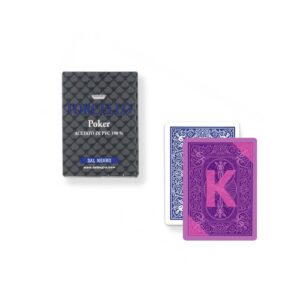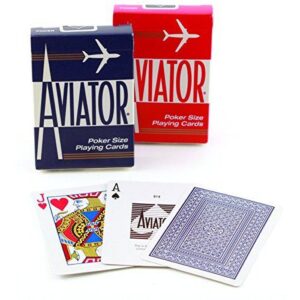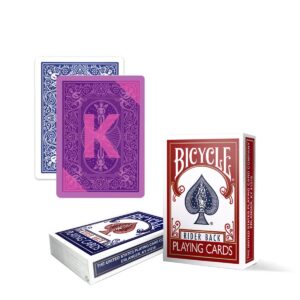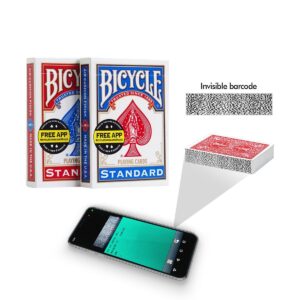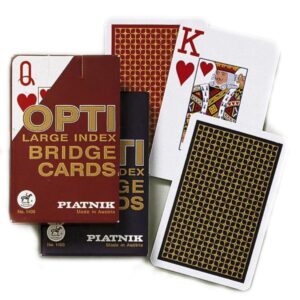Imagine a deck. Close your eyes. What do you picture as a deck of Red and Blue Bicycle Playing Card?
Bicycle Cards are one of the most well-known decks in the world. Their iconic design is something we all take for granted, especially magicians and poker players. We take a look at the evolution of a modern 52-card deck.
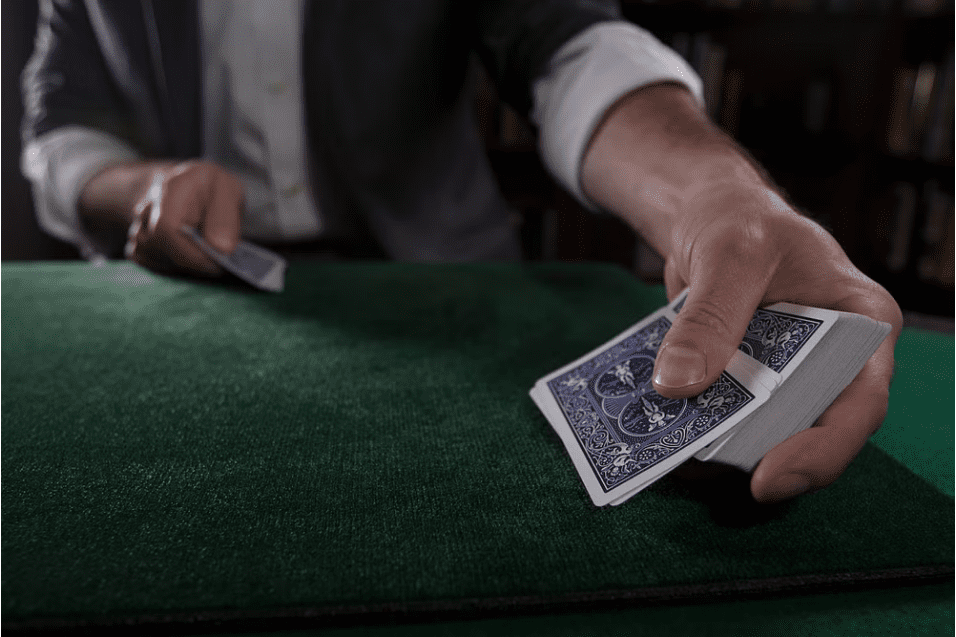
The Early History of Playing Cards
It is highly debated as to the origin of playing card. Some scholars believe that playing cards originated in China during the Tang Dynasty’s 9th century. Some believe that playing cards were created alongside tile games such as dominos and mahjong or have connections with chess and dice games. Some believe that playing cards were used as “play money” in gambling games before being integrated into the actual games.
You can play cards!
The earliest documented record of playing cards was however found in a 1377 manuscript by Johannes, a German monk. Johannes, a Swiss monk, wrote about the evolution of playing cards as well as the many card games that they could be used in.
Playing cards grew in popularity through the end of 14th century and early 15th century. European cards introduced the notion of four suits during this period: The Swords (clubs), Cups (cups), and Coins. These suits are sometimes called “Latin Suits” and can still be found on Spanish and Italian playing cards.
Hand-painted masterpieces were the hallmark of early playing cards, especially the Court Cards. Italian playing cards had a King, Queen, Knave or Prince. Spanish cards didn’t have Queens or 10s. Most Spanish decks would have 40 cards, as they didn’t use any 8s or 9s in the national game of Ombre.
Widespread Card Manufacturing
Because of their extravagant nature, playing cards were often reserved for the most wealthy and noblest. As they gained popularity, new ways were developed to make them faster and more affordable.
They became more popular among soldiers as they made playing cards easier to find. The Germans were able to make playing cards in huge quantities thanks to their innovative wood-cutting techniques and engraving techniques. Germany became the leading player in playing cards by exporting their decks of cards across Western Europe.
Germans also modified the Italian suits to reflect rural German life, changing them to hearts, leaves, acorns and bells. The Queens were replaced by a secondary Jack, and the Aces were replaced by the Twos as highest card. This created a 48-card deck.
Modern Suits: The Evolution
The French developed the suit imagery that we see on playing cards today in the early 15th century. They were the first to separate the suits into red and black.
Playing card printers were able to simplify the symbols and colors, allowing them to create special stencils that dramatically increased card manufacturing speed. The manufacturing of playing cards became more efficient thanks to continued improvements in paper manufacturing and improved printing processes, such as Gutenberg’s printing presses in 1440. The French became the world’s leading player in playing cards, surpassing the Germans.
English playing cards are on the rise
Some of the largest playing card companies were forced to move to Belgium due to heavy taxes in France. Playing cards started to appear in other parts of Europe, including England, where the English names for the suits were finally adopted. The English created the names Clubs, Hearts and Spades from a combination of both French and Italian designs.
It is also the English that made the Ace of Spades one of the most popular and well-known playing cards in a standard deck of card. The new law that prohibited English cards leaving the factory without proof of tax paid was the catalyst for this change. Initially, the Ace of Spades needed to be stamped by hand.
In 1828, however, it was decided that a special Ace of Spades must be purchased from the Commissioners for Stamp Duties. These cards were often decorated with elaborate designs and the maker’s name. This tradition continues even after 1862, when card makers were allowed to print their own Ace of Spades.
Thomas de la Rue, the founder of De La Rue printing, discovered ways to dramatically increase production and lower the cost of playing cards in the 1860s. His mass production saw the end of the extravagant, individual artwork that was often seen on playing cards. This led to the standard designs that we all know today. The introduction of a double-ended, court card was a way for card players to avoid having to turn their hands and reveal that they were using a court card in a poker game.
The American Effect
Even in the 19th century, Americans had a strong preference to buy English goods. To increase sales, some American card manufacturers would print “London” on their Ace of Spades. Lewis I. Cohen was one of those card makers.
Cohen revolutionized the manufacturing of playing cards in 1835 when he invented a printing press that could simultaneously print all four colors. Cohen also led the New York Consolidated Company’s 1871 launch. This company introduced corner indices to their “Squeezers”, playing cards, so that players could easily see their cards using just a fan.
It was also the United States that introduced Jokers to a deck around the year 1861. This card was initially called the “best-bower” because it served as the highest trump in the immensely popular trick-taking game, Euchre. We saw the first Joker used as a “wildcard” in a game poker in 1875.
The most significant role Americans played in the development of playing cards is to standardize and streamline manufacturing processes. Russel, Morgan & Co. was the most notable, and later, it became the United States Playing Card Company.
The USPCC is responsible in developing Bicycle Playing Cards, the most recognized and widely used playing cards in the world. They have acquired many smaller brands, such as Bee Playing Cards or Tally-Ho Playing Cards over their 130-year history and are still considered the industry leader in playing cards.
The history of playing cards is fascinating. We hope you can remember it and enjoy every moment you pull out a deck of cards from your drawer , play poker, or use your favorite card trick.
Playing cards are actually still in development to this day, as you can see with our huge collection of 1000s of custom decks.
Now you are familiar with playing card. Now it’s time for basic card magic, or prop betting. Money magic, mentalism and card magic are all available. We are the largest magic shop and will gladly provide flash papers or magical books. We enjoy the latest magic tricks as well as the old favorites. Magic conventions are also available! We are happy to help you learn magic tricks or learn card tricks.



